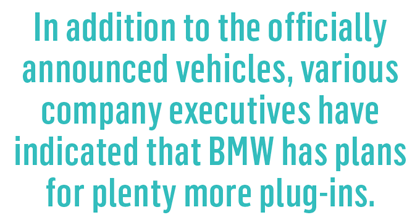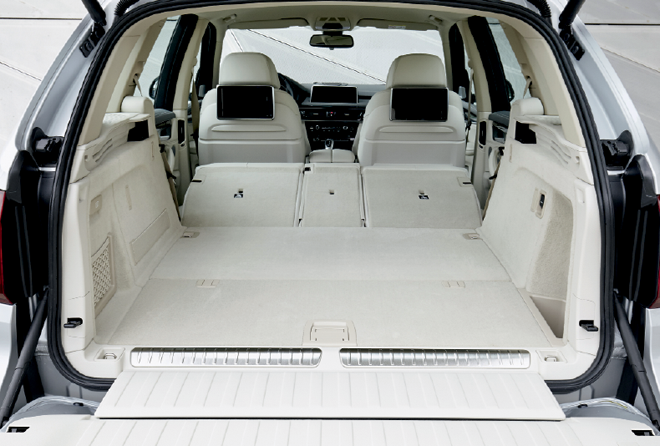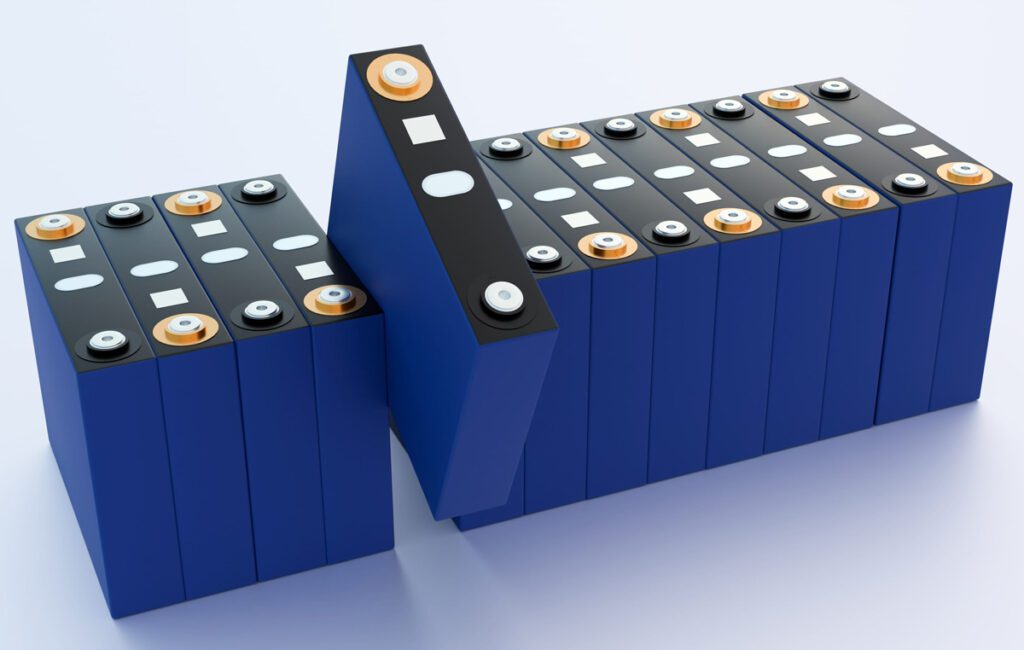BMW has taken a bold approach to electrification. It began test-marketing EVs in 2012 with the Active E and Mini E, and escalated to full-scale production in 2013 with the i3 EV and i8 plug-in super-sports car, which together passed the milestone of 50,000 worldwide sales in January.
BMW deserves a lot of credit for producing the i3 and i8 – it took a big risk on the technology when it committed to designing new platforms for the i sub-brand. While it wasn’t the first major automaker to invest billions of dollars in an electric future, it was among the earliest of adopters. Years later, we continue to see other car companies fall into line as they announce dedicated plug-in vehicle platforms.
Beyond electrification, the i3 and i8 look and feel like cars from the future – inside and out. Jose Guerrero, Product Manager for BMW North America, recently told Charged that it wasn’t always clear how they would be received.
Guerrero: Sometimes we [thought], are we too far ahead of our time? Are people going to appreciate us? It’s definitely a moon shot for us to introduce the first mass-produced carbon-fiber reinforced plastic vehicle, and such a transformational car in the industry. Now, I see one driving by, and I get the biggest smile on my face. I have a unique feeling when I see another i3 or i8 on the road, because I know it’s not the traditional big horsepower, hot color, big wheel – it’s just not that old economy way of thinking.
Plugging in across the board
While BMW’s PHEV plans may not get as much media attention as its next-generation carbon-fiber-wrapped EV models, the company seems equally committed to investing in advanced hybrids.
To date, BMW has revealed a handful of new PHEVs, including the X5 xDrive40e, now available throughout the US; the 330e, coming to the US this spring; the 225xe, to be offered in Europe; and the 740e, which will be the first to hold the new iPerformance model designation. In a February press release, BMW revealed its plans for iPerformance, “which will be given to all BMW plug-in hybrid vehicles from July 2016, providing a visible indicator of the transfer of technology from BMW i to the BMW core brand.”
In addition to the officially announced vehicles, various company executives have indicated that BMW has plans for plenty more plug-ins, saying that it will eventually offer an electrified model in each of its market segments.

One of the most important of those segments is of course the SUV, a perennial favorite of US auto buyers. So, the new X5 xDrive40e – which launched in the fall at all of BMW’s 336 US dealerships – was a good PHEV to start with. Other automakers, including Audi, Porsche, Mercedes and Mitsubishi, are also producing and/or planning plug-in SUVs (PSUVs) for the US.

Redefining premium
Adding a plug-in option to its high-volume vehicle models makes perfect sense for a luxury brand such as BMW. The company now has the chance to redefine plug-in capability as the latest and greatest premium option. Everyone knows that adding motors and advanced battery packs means increasing efficiency, but it seems that few have realized it also means incredible versatility. Plugging in offers an array of new driving modes and performance upgrades like more torque, superior acceleration and smooth and totally silent driving modes.
Guerrero explained how BMW plans to capitalize on the possibilities of PHEVs.

Guerrero: Other auto manufacturers are dancing around the topic of PHEVs, putting them in niche or super-niche segments, and you really question whether they want this to succeed. At BMW, we’re taking not only the step to put it in our most popular models, the 3 series and X5, but we’re really pushing it to the mainstream. It’s not a half-step, where you get the least amount of horsepower – this is really a value proposition. Our intentions are to electrify where it makes sense. We’re really giving it our best to ensure the success of our eDrive models.
Dealers themselves, when they get behind the product, and they get excited about it, they understand it and it’s an easy sell for them. Well-educated dealers can win over customers by explaining EV benefits such as the ability to pre-condition the passenger cabin. If dealerships didn’t have charging stations in front of their dealership, if they didn’t understand the value of having this remote start feature, they couldn’t sell this to the customer. But now, they can say, look – there’s no other BMW with a remote start feature today. And it’s even better than remote start, because you’re not turning on the gasoline engine; it’s just running through the electric power. People can get behind explaining that technology, and selling it to customers.
From a monthly payment standpoint, a plug-in is now within shooting distance of the typical non-plug-in hybrids by other car makers. That’s now reinvigorating the dealerships to go hard on bringing new people into the brand. I’ll give you an example: selling an X5 xDrive40e, or selling a 340e, or a 740e to a current BMW owner, from a previous generation, is not that hard, because they’re already open to the brand, they’re open to the innovation, and they get a good selection of different models to choose from. It’s not the old way of thinking: “Oh, let me get the V8, because I’m a luxury buyer.” It’s no longer that type of customer. A lot of people, especially in the 7 series, for instance, they’re not just picking a V8 because of luxury – we hear from customers that love the silent drive the eDrive gives them, and they’re happy that they can spec out a 740e just as they would a 750.
For a few dollars more
BMW’s pricing strategy is to price the xDrive40e within striking distance of the legacy X5. MSRP, including destination and handling fees, is $63,095. The PSUV qualifies for around $4,000 of federal tax credit, bringing the net price pretty close to the $54,700 MSRP of the plain old plugless X5.
Guerrero explained several reasons why the X5 is the logical first vehicle to electrify in the US.

Guerrero: The first thing, of course, it’s a volume-runner for us. But, there are a lot of people that would say, “Why would you electrify a bigger-footprint SUV?” Well, we actually looked at the driving behaviors of our customers, and whether it’s a 3 Series or an X5, it doesn’t differ – it’s pretty much the same average commute of around 30 miles a day. The most efficient cars would be less impacted by electrification, so it made sense for us to electrify the X5, because it’s one of the more inefficient models in our line-up. [We want] to show people that you can get 56 miles per gallon equivalent if you plug this in every day. It’s not just about the 14 miles of pure electric range, it’s also about the overall miles per gallon that you can get, and all the other benefits of electrification, of course.
It’s just a little bit more expensive, so the question is, how does it pay off to the customer, and when does it pay off? That’s why conversations about what type of driving behavior a customer does are so important. Even in an environment where gas prices are as low as they are today, it still pays off, because you’re getting these incredibly high miles per gallon. One of my colleagues, his commute is only about 13 miles a day. So, he’s been one month now without filling up his car, because he’s able to charge at home, and his full commute is covered with electric range. And, at that point, his miles per gallon are in the 60s. He just uses the gas engine going uphill.
The most important thing is selling the car to the right person, who has the right behavior. It’s not just “I want the sexy red X5 in the parking lot” – it’s more “what type of driving do you do?” Our eDrive models don’t work for everyone, but they work for a lot of people. Especially when people’s commutes are over, say, 60-70 miles per day, it pays off in a quicker timeframe.

Dealer’s choice
Another extremely important part of the electric equation is dealer training and dealer acceptance. BMW has learned quite a lot about selling plug-ins over the past few years, and Guerrero said he’s proud of the way BMW’s independent dealers have gotten on board with its electrified models.
Guerrero: When we launched this, we had – out of 334 dealers – [around] 280 raising their hands and saying “I want to be an i-certified dealership.” What was nice to see also was that all of them said they would service the car. To see the dealerships get behind the product, to have the kind of business foresight to accept the change that’s happening in the automotive industry, and try to get ahead of it, that was extremely valuable for us as an organization. Other car manufacturers don’t have dealerships behind them. To have the support there was extremely important, in order to keep customer satisfaction at a high note, and to keep our partners profitable.

Winning converts
Guerrero told us that BMW’s sales strategy depends on whether a prospective buyer is an existing BMW customer, or a potential “conquest” from a competing brand such as Lexus (which offers a range of hybrid models).
Guerrero: Purchasing reasons for BMW owners are fun to drive and innovation, which we have in the X5 xDrive40e. When BMW customers come in, the sales advisors know to go heavy on how this car makes their life easier, based on the innovation and the type of driving. And the fun aspect of the car, like e-Boost, that’s available in eDrive. This instant torque from a standstill, and also, when you hammer it on the highway, you get this e-Boost signal in the instrument cluster, and you feel this kind of pull, like how it is from the i8.
But if you’re looking at conquesting from, say, a Lexus or a Toyota customer, then the discussion changes to, “Did you know that on the xDrive40e you can get an average of $4,000 in tax incentives?” Typically, the answer is no. Then you can go the other route of innovation. What can this do that the Lexus can’t do? You talk about the conveniences, like the pre-conditioning, and the ability to plug in at the best parking spots, because typically the charging stations are located in the best parking spots – and a lot of these charging stations actually have free electricity. There’s a lot to talk about with the car.
BMW’s current electric flagship, the i3, has become one of the company’s “conquest champions,” winning many new customers from other brands.
Guerrero: We were bringing a lot of new people who didn’t ever look at a BMW, because they saw the cars as the ultimate driving machine. They didn’t see the cars as sustainability, natural resources, and recyclability. Now, they have a product that they can charge using a solar panel, with seats made from recycled water bottles and plastics, that’s built with energy from wind turbines and hydroelectric power. It’s really interesting to see how much people value this part of the story of car ownership. The simplest example: look at the $5 free-trade cup of coffee. People are now aligning their beliefs with their purchasing decisions. And we expect this change to continue. Premium isn’t defined by the luxury leathers. The currency’s going to change to how sustainable a car manufacturer is going to be. That’s translating to our conquest rates, because these people never looked at BMW, and now they’re picking them up.

From a customer side, now we’re learning how to sell electric cars. The people who weren’t early adopters, who haven’t had a plug-in vehicle in the past, we’re learning now how to cater to a customer who is starting to convert from traditional gasoline or diesel to electrification.
Early adopters aside, there’s a lot of lessons learned. For example, the typical questions someone has versus a gasoline car completely changes. It’s no longer what colors does this come in, what packages do I get, and how much horsepower. It’s how much is the charging station, what are the charging times, tell me about public charging.
It’s a new language that they’re speaking. People are more interested in the sustainability aspect of a vehicle, people are more interested in maximum range and keeping weight down. You’d better be able to tell a customer about where to charge, how to charge, and how to live with an electric vehicle.

This article originally appeared in Charged Issue 24 – March/April 2016. Subscribe now.


















































































